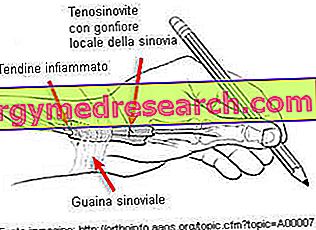The type structure of the cell membrane consists of a phospholipid double layer between two protein layers located at the level of the separation surfaces between the internal and external phases of the cell. The lipid layer is bimolecular, with the polar groups facing the protein layer, while the apolar groups are facing with an isolation function.
The cell membranes, with their thickness of only 90 A, are not visible under the transmitted light microscope. Before the advent of electron microscopy, cytologists assumed that the cell was surrounded by an invisible film, because if this hypothetical film was broken, cellular content could be seen to escape. Today with the electron microscope, the membrane can be visualized as a thin double continuous line. According to current hypotheses, the membrane essentially consists of phospholipid and cholesterol molecules arranged in such a way that their hydrophobic tails are turned inwards .
The polypeptide chains of the membrane protein molecules are perpendicular to the lipid molecules and are believed to maintain the cohesion between the different parts of the plasma membrane.
The membranous structure fulfills the task of having to separate the cellular environment from the extracellular one, the nucleus from the cytoplasm, and also the material inside the various organelles from the cytoplasmic matrix.
In every cell, animal or plant, the peripheral layer of the protoplasm has the morphological and functional characteristics of a membrane that separates two different environments, which can be identified with solutions that possess different chemical-physical characteristics and compositions. The function of this diaphragm is to allow the passage of water and other small solutes inside the cell, while it is opposed to solutes of high molecular weight. In general the direction of the flow is determined by the concentration of the composition of the solution on the sides of the membrane, the flow always occurs in the verse from the most diluted solution to the most concentrated: it tends to balance the two concentrations and ceases when equality is reached . The pressure required to completely stop this movement is called osmotic pressure. It is all the greater as the solution is concentrated.
The cell membrane is not an ideal semipermeable membrane, as it is impermeable to some, but not all, the solutes present. The permeability or otherwise of the membrane to solutes does not depend exclusively on its chemical-physical structural characteristics, but largely on phenomena intimately linked to cellular metabolism.
The cells, in relation to their behavior related to osmotic pressure and environmental pressure, are divided into: poichilosmotic and omiosmotic. The former have an osmotic pressure equal or almost to that of their environment, the latter are able to maintain an osmotic pressure within a wide latitude of values, very different from the environmental ones. Taking into account these characteristics of the behavior of animal and plant cells, J. Traube created a special apparatus, consisting precisely of a semipermeable membrane, which had to artificially reproduce the behavior of living cells in front of given solutions. Initially it was used as a membrane, a copper ferrocyanide film; subsequently semipermeable membranes were introduced with which it was possible to ascertain the extent of considerable osmotic pressures.
Finally, it can be stated that the passage of the various substances through the plasma membrane can take place by simple diffusion, facilitated, or by active transport.
Simple diffusion: passive transport through the lipid bilayer. Diffusion is the movement of molecules from one area to another due to their random thermal agitation. In simple diffusion, the permeability of the membrane is determined by the following factors: (a) the liposolubility of the substance that diffuses, (b) the size and shape of the molecules that diffuse, (c) the temperature and (d) the thickness of the membrane .
Facilitated diffusion: passive transport through membrane proteins. The facilitated diffusion is operated by two types of transport proteins: (a) transporters, which bind the molecules on one side of the membrane and carry them on the other thanks to a conformational modification and (b) channels, which form pores that extend from one side of the membrane to the other. In facilitated diffusion, the permeability of the membrane is determined by two factors: (a) the transport speed of the individual transporters or channels and (b) the number of conveyors or channels present in the membrane.
Active transport. There are two main types of active transport: active primary transport, which uses ATP or other forms of chemical energy and secondary active transport, which uses the electrochemical gradient of a substance as an energy source to induce active transport of a high substance.

Click on the names of the various organelles to read the in-depth analysis
Image taken from www.progettogea.com
Edited by: Lorenzo Boscariol



